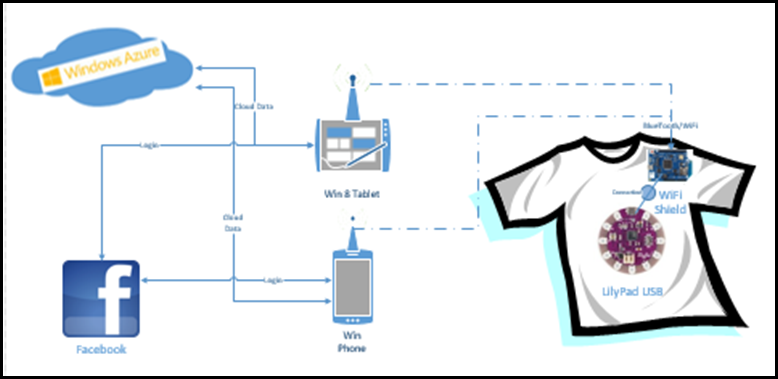Visio and Arduino: An example of the physical design for an e-wearable
My idea is to create a system to quickly modify an arduino Lilypad form factor. The Lilypad Arduio is designed to be wearable, with contacts that do not require soldering and work with the stainless steel conductive thread that can be washed, and isn’t too expensive. In the diagram below I show a potential system that uses either a Windows Tablet or Win Phone to either use WiFi or Bluetooth to update software in a e-wearable. No sensors are shown here because this is the overall design document you might use on Kickstarter to demonstrate the e-Wearable with programming tools as well as log-in.
This time of e-wearable would be somewhat expensive, depending on the sensors used the e-wearable would need to be used in medical or safety situations. For instance if the e-wearable is made in groups of 100, the Arduino Lilypad would cost around $40 US at the end of assembly, with a shirt, battery, an accelerometer, switch, temperature sensor but no WiFi Shield. The WiFi or Bluetooth programmer could be used during the period that the e-wearable shirt is being programmed and then removed, or used during the medical tests.
For this blog post, the diagram uses Visio Stencil “Masters” that I created and added to a stencil which you can reuse when I get it posted to the Visual Studio Gallery, which takes a few minutes of bureaucratic effort that I don’t want to go into right now.
The interesting thing is that you can attach data to each stencil and be able to build out a Bill of Material that is tied to live data say from https://www.sparkfun.com.
In my life I can visualize things pretty well in my head, but need to have these kinds of tools to communicate with others.
